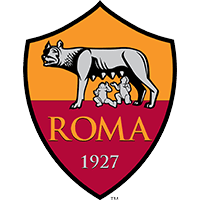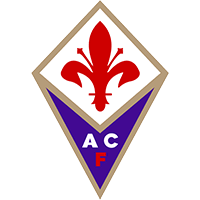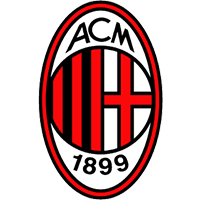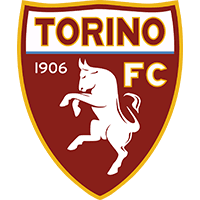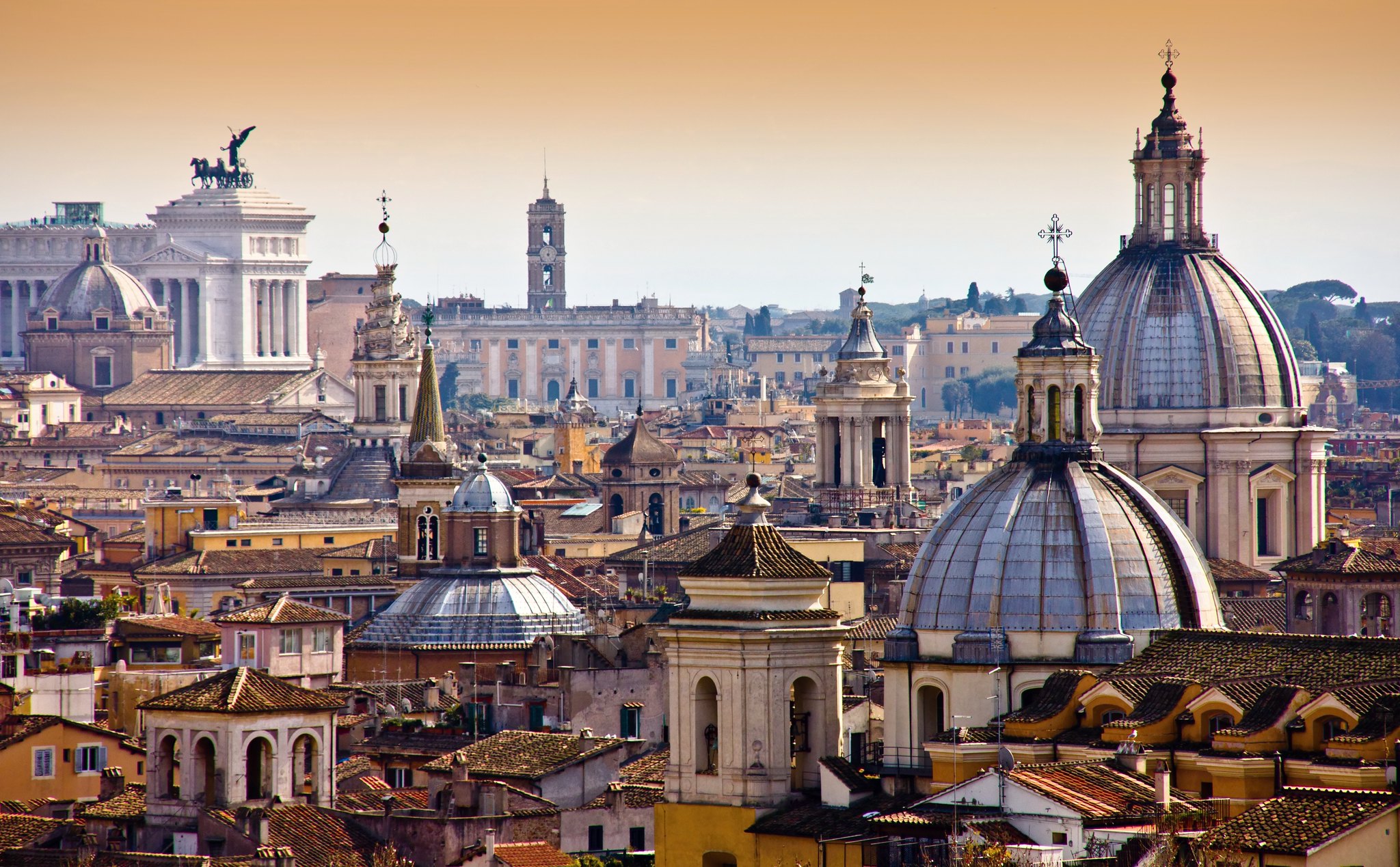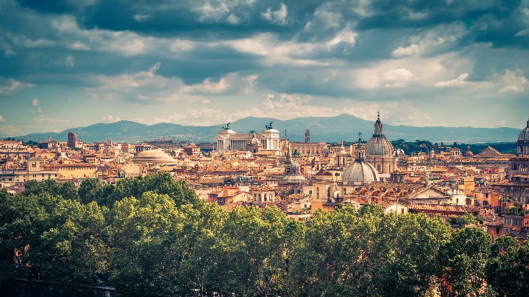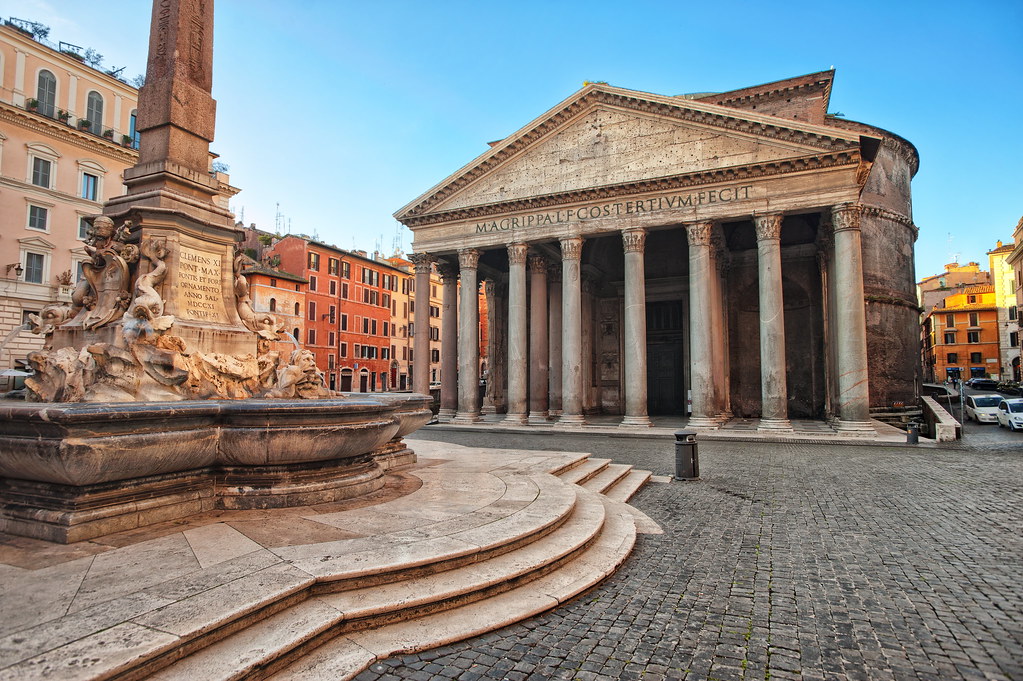Om byen
![shutterstock_439742272]()
Here’s the low-down on just some of the highlights to help you plan your trip to Rome:
Stadio Olimpico (Stadium Tour)
The Olympic Stadium in Rome is one of the temples of world sport. Built in 1952 for the 1960 Olympic Games, it was renovated in 1989 in preparation for the 1990 World Cup. Stadio Olimpico is home to two Seria A football clubs – AS Roma and SS Lazio - along with the Italian National Football Team. With a capacity of 81,903, it is one of the largest stadiums in Europe and has hosted many prestigious events such as the UEFA Champions League 2009 final. There are no official tours of the stadium but it is well worth visiting when no matches are being played, just to see some of the highlights without the crowds. In the outer grounds, there are various statues and mosaics depicting various Olympic sports such as throwing the discus, running and jumping.
Address: Stadio Olimpico, Viale dei Gladiatori 2, Rome
Location: 4km north of the Vatican City
From Termini Station: Take metro A line, direction Battistini, and get off at Ottaviano stop, then take the bus 32. Get off at Piazzale della Farnesina. Or take the metro A line direction Ottaviano and get off at Flaminio stop, then take the tram no. 2 and get off at the terminus in Piazza Mancini.
From Tiburtina Station: Take the metro B line, direction Laurentina, get off at Termini. Change to metro A line, direction Battistini (Ottaviano stop), and from there take the bus 32 and get off at Piazzale della Farnesina.
From Station Ostiense: Take metro B (Piramide) Rebibbia, get off at Termini, then change to metro A line, direction Battistini (Ottaviano stop), and from there take the bus 32 and get off at Piazzale della Farnesina.
![shutterstock_1044794239]()
The Vatican
St Peter’s Square and Basilica St Peter’s Basilica is a stunningly ornate marble-encrusted basilica on the site of St Peter’s tomb. The façade facing St Peter’s Square has a huge colonnade by Bernini, topped by statues of saints. From one window, the Pope blesses the faithful who gather in the piazza below. Get there early in the morning to avoid long queues if you want to explore inside the basilica. The 137m (448 foot) high dome of the basilica was designed by Michelangelo and completed in 1590, long after his death. You can climb to the top if you wish. The Pieta sculpture is another of Michelangelo’s masterpieces, in a side chapel, and Bernini’s extravagant baroque canopy stands above the Papal Altar. There is a 13th century bronze statue of St Peter, whose foot has been worn thin from the kisses of pilgrims. The Treasury is another unmissable highlight, housing ecclesiastical treasures, tombs and vestments of past popes.
Location: Vatican City
Metro: Take Line A towards Battistini and exit at Ottaviano-S. Pietro. Walk south to St Peter’s Square
![shutterstock_320760683]()
The Vatican Museums
The Vatican Museums are one of the world’s finest collections of Classical and Renaissance artworks. They are housed in palaces that are worth visiting in their own right with fabulous frescoes. Look for the Borghia Apartment, the Raphael Rooms and the Sistine Chapel, two of the best areas to head for.
Metro: Take Line A towards Battistini and exit at Ottaviano-S. Pietro or Cipro-Musei Vaticani. Walk along the Vatican wall to the entrance
![shutterstock_243970966]()
Castel Sant’Angelo
This massive round fortress topped with the Archangel Michael dates back to 139 AD when it was the mausoleum of Emperor Hadrian. It has since served as a mediaeval citadel, a prison and a place of safety for Popes during times of unrest. It makes a great place to visit and tours include the dark prison cells and the lavish apartments of Renaissance popes.
Location: Lungotevere Castello
Bus: 23, 34, 280 Ancient Rome
![shutterstock_311589545]()
Pantheon
The Pantheon is the best-preserved ancient building in Rome and is thought to have been built by Emperor Hadrian in 118 AD. Enter through the massive pedimented portico and prepare to be amazed by what lies inside. The huge hemispherical dome has a coffered ceiling with an opening in the centre, the oculus, which is the only source of light. The impressive dome and sarcophagi make this an awesome place to visit.
Location: Piazza della Rotonda
Bus: 116 and many others
![shutterstock_136932575]()
Roman Forum
The forum was the centre of life in ancient Rome and the ruins are in a confusing pattern, so view them first from Capitoline Hill to get an idea of the layout. The Via Sacra was where the celebratory processions took place, and there are two triumphal arches, built to celebrate various Roman victories. Look for the Temple of Venus and Rome, built by Hadrian in 121AD, and the Church of Santa Francesca Romana. This is known as the patron saint of motorists and if you visit around March 9, you will see cars being driven to the church to have them blessed.
Location: Entrances from Largo Romolo e Remo, Via del Foro Romano and the Arch of Titus on Via Sacra. Metro: Colosseo
![shutterstock_475397230]()
Colosseum
The Colosseum is Rome’s great amphitheatre, a majestic sight despite centuries of damage and neglect. It had 80 entrances and room for 55,000 spectators within the four tiers of arched walls. Inside the arena you can imagine the gladiatorial fights, bloody wild animal fights and chariot races that went on here – the equivalent of a good football final today!
Next to the Colosseum, you cannot miss the Arch of Constantine, covered in reliefs and statues taken from earlier monuments.
Location: Piazza del Colosseo Metro: Colosseo
![shutterstock_301179038]()
The Colosseum, an example of the architecture and construction of the present (soccer) stadiums.
Servian Wall
This Roman wall once encircled all the seven hills on which Rome was built. The best places to see the remains of this 4th century architecture are near the Termini Railway Station and on Aventine Hill. There are lengthy sections in good condition all around the outskirts of Rome. Location: Outskirts of Rome
Metro: Termini
Other Attractions in Rome
Trevi Fountain
This splendid fountain is decorated with statues, with a centrepiece of a large shell pulled by sea horses driven by two tritons. It is one of the more modern of Rome’s attractions, completed in 1730. It is a custom for visitors to throw coins into the fountain, which is donated to charity.
Location: Piazza di Trevi
Bus: 52, 53, 61, 62, 63, 71, 80, 95, 116 and 119
![shutterstock_194861762]()
Spanish Steps
This impressive flight of steps descends grandly from the Church of Trinita dei Monti to the Piazza di Spagna. This dramatic landmark has several curves and terraces and is decorated with pots of flowering plants. It is a great place to sit, write postcards, text home or just rest your feet and people-watch. Location: Scalinata della Trinita dei Monti
Metro: Spagna
![shutterstock_708089359]()
Bocca della Verita (Mouth of Truth)
If you want a little light-hearted fun with your mates, visit La Bocca della Verita. This man-like face was carved out of Pavonazzetto marble in the 1st century; probably as a fountain or drain cover. It soon became used as a lie detector. Romans believed that if they put their hand into the mouth of the sculpture and then told a lie, the mouth would bite the hand! It became famous after featuring in the film “Roman Holiday” with Audrey Hepburn and now tourists line up to test it out. You should give it a try!
Location: Piazza Bocca della Verita
Metro: Line B to Circo Massimo
![shutterstock_1083763043]()
Piazza Navona
This baroque plaza is on the site of a 1st century stadium, built not for football but for chariot races and athletics contests. The remains of the stadium foundations can be seen below the Church of St Agnese in the square. This plaza is famous for its beautiful Fontana dei Quattro Fiumi, depicting the four greatest rivers of the world – The Nile, Plate, Ganges and Danube. It is a cooling place to visit on a hot day.
Location: Piazza Navona
Bus: 40, 46, 62, 64, 81, 87, 116, 492, 629
![shutterstock_324504485]()
Capitoline Museums
The Piazza del Campidoglio is one of Rome’s highlights. Redesigned by Michelangelo for the visit of Emperor Charles V in 1536, the Capitol building and palaces surrounding the piazza were given a facelift. The Cordonata staircase is crowned with massive statues of Castor and Pollux. On either side are the Capitoline Museums - the Palazzo Nuovo and the Palazzo dei Conservatori. Look for the painted frescoes on the walls and enjoy the massive collection of sculptures, porcelain and art galleries in these adjoining palaces.
Location: Piazza del Campidoglio
Bus: 40, 63, 64, 70, 75
![shutterstock_150766004]()
Getting Around Rome
Rome has a subway system, the Metropolitana or Metro, with two lines. Line A crosses the city from northwest to southeast and Line B runs from southwest to northeast. The lines intersect at the Stazione Termini, the central station, which is also the central point for many bus routes. Buses are cheap and plentiful, another good way to get from one area to another. You will need to buy tickets before boarding the Metro, tram or bus from a 'Tabacchi' - look for the big 'T' sign. Metro stations have automated ticket kiosks, and major Metro stations have manned ticket windows. You may benefit from buying a Roma Pass (around €38,50 for 3 days €28 2 days) which gives unlimited rides on public transport, free admission to two museums and discounted admission to many other attractions. Taxis are available throughout the city and official taxis are white in colour. The best way to get around the narrow streets is on foot.
![shutterstock_661216633]()
